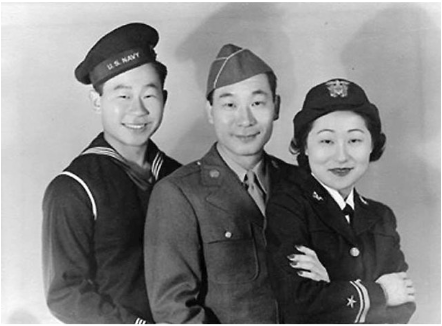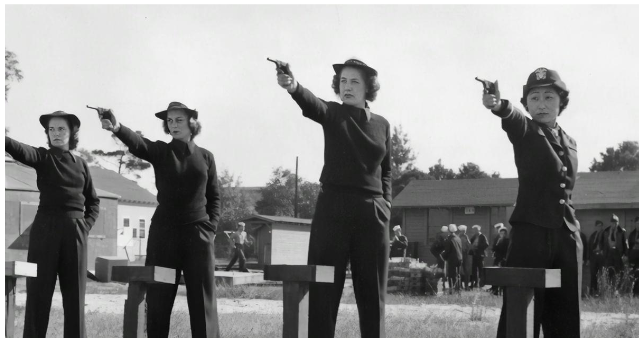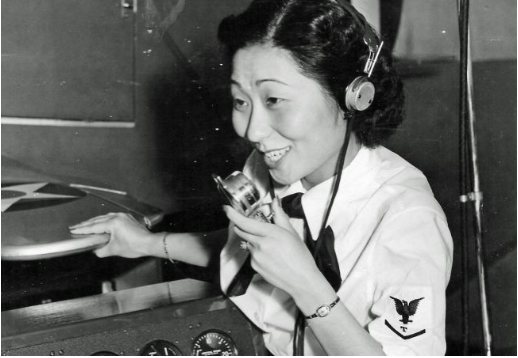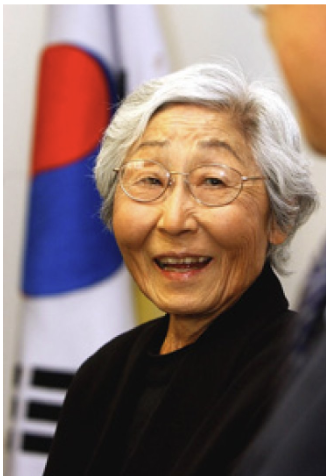
Susan Ahn was born on January 16th, 1915 in Los Angeles, California. She was the eldest daughter of five children to Changho “Dosan” Ahn and Helen Lee. Changho and Helen Ahn moved to the United States in 1902, becoming one of the first Korean immigrants to do so. During that time, their homeland, Korea, was under a culturally oppressive Japanese regime, which caused many Koreans to migrate. Korea would eventually be annexed by Japanese control in 1910, until 1945. The Ahn couple devoted themselves to fight for their country’s liberation and worked endlessly in the independence movement, especially her father, who is now a revered historic figure in Korean history. Throughout Cuddy’s childhood, she would see her father constantly move back and forth from California to Korea for his independence activism. In fact, the Ahn residence in California was even made into the headquarters for the Young Korean Academy, a training academy established by Changho, which made their home a resource for aiding the Korean diaspora.
The last time Cuddy saw her father was in 1926, after he left for Korea. In 1938, Changho Ahn was imprisoned in Seoul for protest against Japanese occupation and passed away after succumbing to the injuries from torture and imprisonment. Cuddy’s observation of her father’s devotion and sacrifice for Korean independence played a major role in defining her own identity and morals. He emphasized to not only embrace their Korean heritage but also strive to be the best American citizens they could be despite the limits placed on them due to race or gender.
Cuddy was an extremely active young girl. She played both baseball and field hockey and even continued her baseball career as captain in college at Los Angeles City College. She later transferred to San Diego University and graduated in 1940 with a degree in sociology.
Throughout this time, anti-Asian opinion began to grow as Japan’s imperial expansion dominated and World War II began advancing. Three years following the death of her father, Pearl Harbor was bombed by Japan, and the United States joined the war. Despite the rising racial distrust against Asian-Americans, Cuddy, alongside her two brothers Phil and Ralph Ahn, did not hesitate to serve their country. The Ahn siblings were eager to join the Armed Forces because it was a way of fulfilling their father’s promise of serving their country while also fighting for the freedom of her motherland from Japanese colonial rule.

Susan was only able to join the Navy through the WAVES program established in 1942 (Women Accepted for Volunteer Emergency Service) which allowed women to fill ranked positions in the military for the duration of World War in order to free up men for combat positions. This program was a new opportunity where women could achieve success at a high level of authority, formerly unattainable before the World War. Cuddy had to apply several times to WAVES because of constant rejection. This was no surprise for Cuddy, as this was a time where the United States held immense prejudice over Asians - more than 127,000 U.S. residents of Japanese heritage were sent to internment camps following Pearl Harbor. This did not deter Cuddy from reaching her goals as she soon got accepted, becoming the very first Asian woman enlisted to the program.
Through WAVES, Cuddy learned how to work flight simulators, which she would then instruct future pilots to use. She was also trained as an aerial gunnery instructor to help aircrews practice aiming at moving targets. An officer at WAVES recognized Cuddy for her outstanding work in the program and recommended she become an officer. As a result, in 1943, Cuddy attended an officer training program in Massachusetts and was soon commissioned as a WAVES officer. Later that year she was sent to gunnery school in Florida, to train on a variety of weapons used in combat. Upon graduation, Cuddy became the first female Navy gunnery officer. In 1944, officer Cuddy was sent to Atlantic City Naval Air Station to train naval aviators on how to fire machine guns at enemy aircraft. After being named lieutenant, Cuddy began working alongside elite codebreakers at the Naval Intelligence Office for her ability to speak Korean. Despite her successful career, many still regarded her with extreme suspicion because of her race. One of her supervisors initially would not let her get close to classified documents after being hired. Yet Cuddy’s skill and diligence proved her worth, and the intelligence office later appointed Cuddy to be the Naval Liaison with the Library of Congress.

On Sept. 2, 1945, Japan surrendered, ending World War II, and liberating Korea from Japanese occupation. The dreams of Cuddy’s father, Chango, were fulfilled as his children followed his path to devote their lives to service. He became a national hero in South Korea for his activism and loyalty to the country’s freedom.
While working with the Naval Intelligence Office, Cuddy met Chief Petty Officer Francis Cuddy, an Irish American codebreaker who happened to work on matters pertaining to Korea's independence. The two fell in love and married in April 1947, shortly after Cuddy retired from WAVES and the Navy in 1946. The couple lived in Virginia, but the Jim Crow era and its anti-miscegnation laws didn’t allow for interracial marriages. Instead, they had a wedding in Washington, D.C at one of the few chapels in the country that would officiate the marriage. Neither family approved of the union at first, and the marriage even caused a five year long conflict between Cuddy and her mother.

Cuddy continued to work as an intelligence analyst and section chief at the National Security Agency and ran a think tank during the Cold War, becoming the first Asian American female in both positions. She worked on top secret projects for the Defense Department and supervised more than 300 scholars and experts in Russian affairs.
By 1959, Cuddy retired from the government and moved back to Los Angeles. There, her relatives would learn to understand and accept her husband, and the couple would start their own family. They had a daughter, Christine, and a son, Phillip. Cuddy helped at the family's restaurant, Phil Ahn’s Moongate Restaurant, but she continued to support Los Angeles’ vastly growing Korean American community and worked to preserve the history of her pioneering parents and other Korean immigrants. Over the years, she also promoted civic engagement after watching her parents struggle to gain acceptance in America when she was young, and worked to build bridges between racially diverse communities.
In honor of her commitment to public service, Cuddy was named Woman of the Year in 2003 by California State Assembly District 28. In 2006, she received the American Courage Award from the Asian American Justice Center in D.C. and several other recognitions including a holiday in her name. In her elderly years, she remained active, speaking at Navy functions and Korean American community events. As a breast cancer survivor, she also helped raise money for the cause. She was honored with numerous accolades by government bodies and nonprofits. Cuddy died peacefully in her sleep at her home on June 24, 2015 at the age of 100 years old.
Why Did I Choose to Research Susan Ahn Cuddy?
I came upon Susan Ahn Cuddy when learning about her father Ahn Changho, a highly respected Korean figure who fought for the freedom of Korea while being colonized. My parents would teach me about his efforts towards Korea’s liberation as they learned about Ahn in history books as young students in Korea. I also was aware of Cuddy’s brother, Phil Ahn, a pioneer for Asian American actors in Hollywood who acted alongside another Asian American trailblazer, Anna May Wong. While both deserve great respect and recognition for their work, it was alarming to me that I had only known of Cuddy’s father and her brother long before learning about her impact. Writing of Susan Ahn Cuddy was a way for me to further explore her life’s impact. By doing so, I was able to build a sense of gratitude for the path she has paved for women and Korean Americans like me.
Works Cited
Blakemore, E. (2016, May 3). The Officer Who Opened the U.S. Navy for Asian-American Women. Time. https://time.com/4314308/susan-cuddy-history/
Lieutenant Susan Ahn Cuddy: Asian-American Trailblazer. (2022, May 18). Naval History and Heritage Command. https://www.history.navy.mil/content/history/nhhc/browse-by-topic/diversity/asian-americans-pacific-islanders-in-the-navy/susan-ahn-cuddy.html
Susan Ahn Cuddy. (n.d.). http://www.susanahncuddy.com/susansbiography.html
U.S. Department of Defense. (n.d.). Navy Lt. Susan Ahn Cuddy Carved the Path for Asian American Women. https://www.defense.gov/News/Feature-Stories/Story/Article/2586537/navy-lt-susan-ahn-cuddy-carved-the-path-for-asian-american-women/
This article was published on 9/30/24